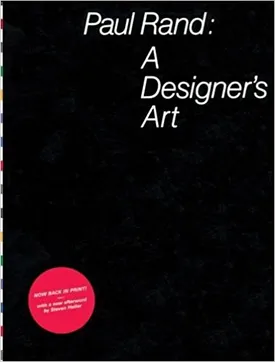A Designer’s Art by Paul Rand
A Designer’s Art by Paul Rand is a collection of essays by the seminal mid-century graphic designer, Paul Rand. His writings analyze the fundamentals of design, including visual theory and its application in advertising, corporate identity, publishing, and digital media. The text is essential reading for any designer, aspiring or professional, looking to refine and enhance their skills.
In the opening essay, “Design and Designers”, Rand explains the intrinsic nature of design. Drawing upon his extensive experience in the fields of graphic design and advertising, he describes a designer’s task as “the application of problem-solving skills to the production of visual communication.” This includes finding solutions to the challenges of capturing audience attention, conveying complex concepts, and captivating consumers.
The next essay, “Design Thinking”, discusses the development of original designs. Rand explains that a successful ad or logo must be invented with a deep understanding of the company’s purpose and identity. Too often, designers are tempted to use existing imagery. Such approaches do not work in the long-term because they lack a genuine connection with the company’s mission. Rand states that creativity must come from the imagination, the ability to synthesize and integrate diverse ideas.
In “The Role of Craft” Rand explains that craft “refers to the way design is expressed and executed.” Without craftsmanship, design is theoretical, dull, and too intellectual to be compelling. Rand explains that it is the craftsman’s job to find visually creative ways of expressing ideas, pointing out that “the presence of craftsmanship elevates design from a mere exercise in typography to a subtle and powerful tool of communication.”
“Medium and Message” discusses the role of a designer in adapting their work to different media. Rand states that understanding the requirements, capabilities, and restrictions of a medium is essential in order to produce successful designs. He also highlights the importance of tailoring messages to each medium. A piece of design may look good on a printed page but look ineffective in another format, such as web or television.
In “The Nostalgia of Modernism”, Rand cautions against an over-reliance on the past. Too often, designers succumb to nostalgia, blindly copying ideas and trends of the past. This nostalgia fails to acknowledge the growing complexity of the present and to recognize what designs may work effectively in the future. Rand suggests that instead of looking to the past, designers should focus on understanding current technologies, trends, and cultural changes.
Finally, “Simplicity and Complexity” challenges the notion that a simplistic approach is best. Although Rand is often associated with the “less is more” philosophy, he questions the idea that simple solutions are inherently better, saying “tidiness and conceptually ordered complexity can coexist in great design.” He also explains that, at times, a piece of design can be deliberately chaotic so as to attract attention and convey a message.
A Designer’s Art is an essential text for designers of all levels, containing timeless wisdom and advice from one of the eminent design theorists of the 20th century. In his elegant, thoughtful and compelling essays, Rand offers insight into the fundamentals of design, offering guidance on topics such as the design process, composition, craftsmanship, medium, and the use of simplicity and complexity.

